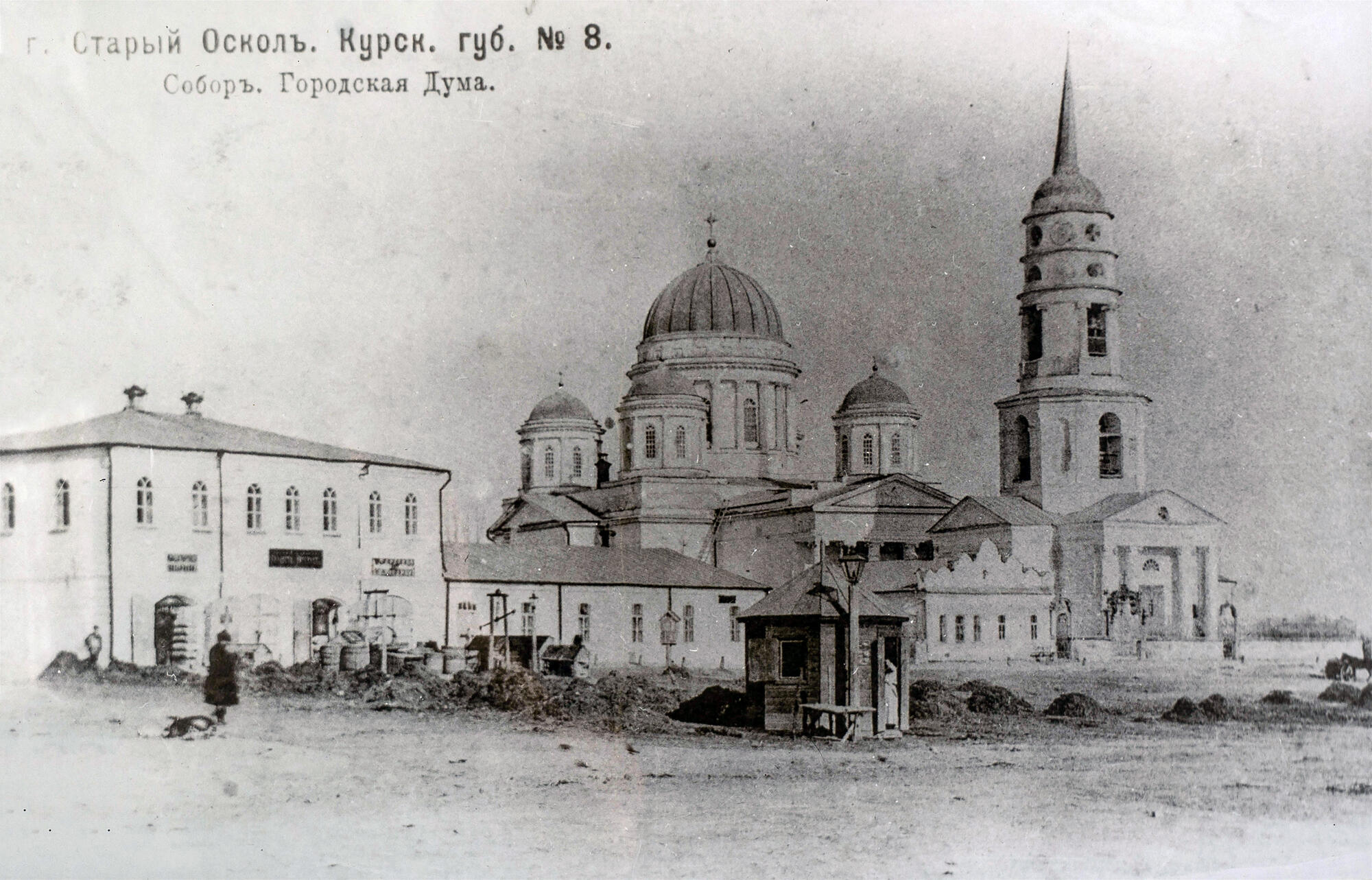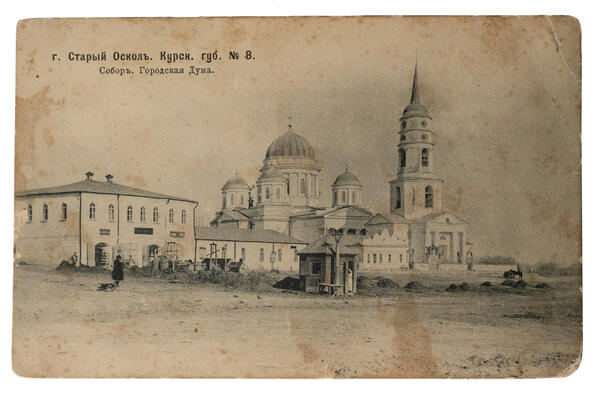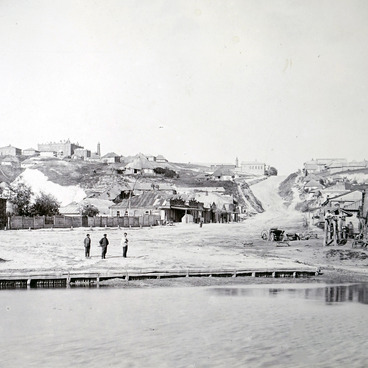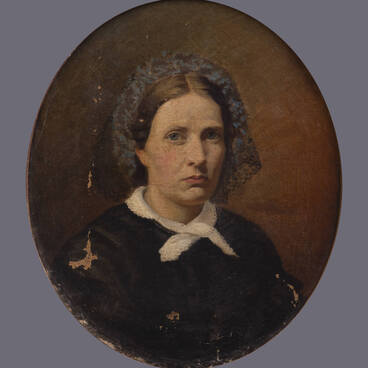The black and white photograph shows a partial view of Nizhnyaya Square with the buildings of the Epiphany Cathedral and the City Duma. On the left side of the picture is a two-story building with a hip roof — this is the building of the City Duma. In the center is the Epiphany Cathedral with its bell tower.
Nizhnyaya Square is the former center of the fortress; its second name — Torgovaya Square — is associated to the location of the public and commercial center of the fortress, and later of the town. At the beginning of the 20th century, the Nizhnyaya Square was home to the Epiphany Cathedral, the Commercial Assembly Garden, the shopping arcade, the City Duma, the treasury, the police department, the prison, the merchant Kobozev house and the Turminsky pharmacy.
The building of the City Duma had been completed by the end of the 19th century. The Duma was responsible for the issues of improvement, as well as the administration of schools, medical and charity affairs, trade, credit and many other matters. The central temple of the pre-revolutionary Stary Oskol was the Epiphany Cathedral. The stone church in the name of Epiphany was built in 1840 on the place of the old wooden church in the name of the Nativity of the Blessed Virgin (existed since 1593). The cathedral was a round one-story building with a hipped roof crowned by five domes. The stone building of the Epiphany Cathedral was clad with marble. It was notable for rich internal furnishing: the walls were decorated in imitation of marble, the iconostasis was gilded on wood with high carat gold. The cathedral had a belltower, built in 1811, a choir of singers, a library, a parochial school. Numerous merchants donated a lot of money for the church: Alexey Ivanovich Ivanov, Maxim Nikiforovich Simonov, Stephan Matveyevich Kobozev and others. It is known, that a garden was arranged around the church thanks to the efforts of the church steward Mikhail Aleksandrovich Ivanov. The place for it was donated by merchant Stephan Kobozev. The church had its own library, in which there were 24 books of spiritual content and noteworthy historical books. The collegiate church was surrounded by a cast-iron fence on a stone foundation with four doors, and there was a garden inside the fence. The church was demolished in the 1930s.
One of the temple’s relics is an icon of the Our Lady of the Sign, which is linked to many legends of curing the townspeople of their ailments.
Nizhnyaya Square is the former center of the fortress; its second name — Torgovaya Square — is associated to the location of the public and commercial center of the fortress, and later of the town. At the beginning of the 20th century, the Nizhnyaya Square was home to the Epiphany Cathedral, the Commercial Assembly Garden, the shopping arcade, the City Duma, the treasury, the police department, the prison, the merchant Kobozev house and the Turminsky pharmacy.
The building of the City Duma had been completed by the end of the 19th century. The Duma was responsible for the issues of improvement, as well as the administration of schools, medical and charity affairs, trade, credit and many other matters. The central temple of the pre-revolutionary Stary Oskol was the Epiphany Cathedral. The stone church in the name of Epiphany was built in 1840 on the place of the old wooden church in the name of the Nativity of the Blessed Virgin (existed since 1593). The cathedral was a round one-story building with a hipped roof crowned by five domes. The stone building of the Epiphany Cathedral was clad with marble. It was notable for rich internal furnishing: the walls were decorated in imitation of marble, the iconostasis was gilded on wood with high carat gold. The cathedral had a belltower, built in 1811, a choir of singers, a library, a parochial school. Numerous merchants donated a lot of money for the church: Alexey Ivanovich Ivanov, Maxim Nikiforovich Simonov, Stephan Matveyevich Kobozev and others. It is known, that a garden was arranged around the church thanks to the efforts of the church steward Mikhail Aleksandrovich Ivanov. The place for it was donated by merchant Stephan Kobozev. The church had its own library, in which there were 24 books of spiritual content and noteworthy historical books. The collegiate church was surrounded by a cast-iron fence on a stone foundation with four doors, and there was a garden inside the fence. The church was demolished in the 1930s.
One of the temple’s relics is an icon of the Our Lady of the Sign, which is linked to many legends of curing the townspeople of their ailments.



